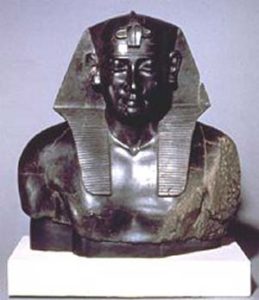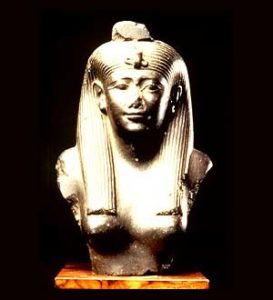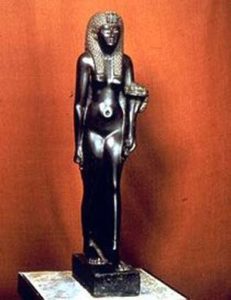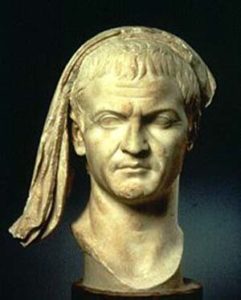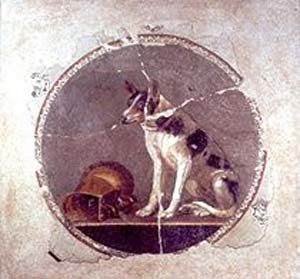Cleopatra_Queen of Egypt
Organized in collaboration with the British Museum and Egytptian Ministry of Culture
October 12, 2000 / February 25, 2001
Roma – Palazzo Ruspoli (174.864 visitors)
Londra – British Museum (167.000 visitors)
Chicago – The Field Museum (293.983 visitors)
Catalogue – Electa
- Busto di Tolemeo II, 305-283 a.C.
- Statua di Iside Epoca tarda, XXVI dinastia, regno di Amasi
- Statua di Cleopatra VII, 51-30 a.C.
- Ritratto di Marcantonio, secondo quarto del I secolo a.C.
- Ritratto di Agrippa, 25-10 a.C.
- Mosaico con cane, 200-150 a.C.
Alexandria was famous for the beauty of its urban layout, the grand and sacred tomb of Alexander the Great, the Lighthouse, one of the Seven Wonders of the World, the Museum, and the monumental library. As the capital of the Kingdom of Egypt, it was the most significant Hellenistic city, a political center of great strategic importance for the East, the queen of the Mediterranean for the scale of its commercial activities, and a center for cultural and religious propagation.
In this cultured, refined, and cosmopolitan world Cleopatra grew and was educated.
In this section of the exhibition the visitor, through a selected repertoire of art objects, can immerse in the refined Alexandrian culture that formed the future queen.
The great Ptolemaic dynasty, of which Cleopatra VII was the last queen, is triumphantly represented through the images (statues, portraits, seals, coins, art objects) of the kings and queens who succeeded to the throne of Alexander the Great, conqueror of Egypt.
Ptolemy Soter, Ptolemy Philadelphus, Apion, the various Arsinoes, Cleopatra, Berenice tell us, through the power of their monumentalized images, the greatness and miseries of their human experiences that shaped the history of Hellenistic Egypt.
All the depictions of the queen recently identified are paired with the most famous portraits representing her in a pharaonic attire, featuring the rigid posture reminiscent of traditional Egyptian statues, as well as in a Greek attire, displaying the fluidity of drapery and body, with the facial features perfectly rendered in the round.
The story of Cleopatra’s second great love is intertwined with the story of the conflict between Anthony and Octavian, the conclusion of the civil wars that for almost a century shook Rome, bringing the crisis and the end of the Republic.
The Battle of Azio marks the end of Anthony’s eastern project, the defeat of Cleopatra, and the final military occupation of Egypt.
The Battle of Azio is beautifully represented by some marble reliefs and the bronze prow of a ship.
Virtual reconstructions will allow you to understand the stages of the dramatic naval battle. The surprising Egyptian influences that brought to Italy the religion of pharaohs and the culture and the art of Egypt. A real “Egyptomania” overwhelmed the Roman world.
Temples and sanctuaries dedicated to Iside and Serapis were built throughout the Empire.
Obelisks, pharaonic statues, sphinxes, hieroglyphic plates, reliefs were stolen from Egypt and brought to Rome to decorate sacred and civil places.
Mosaics and paintings in Egyptian style and with Nilotic landscapes decorated baths and private villas; the reliefs executed in Rome, imitating those of Egypt, adorned temples, tombs, and civic locations.

